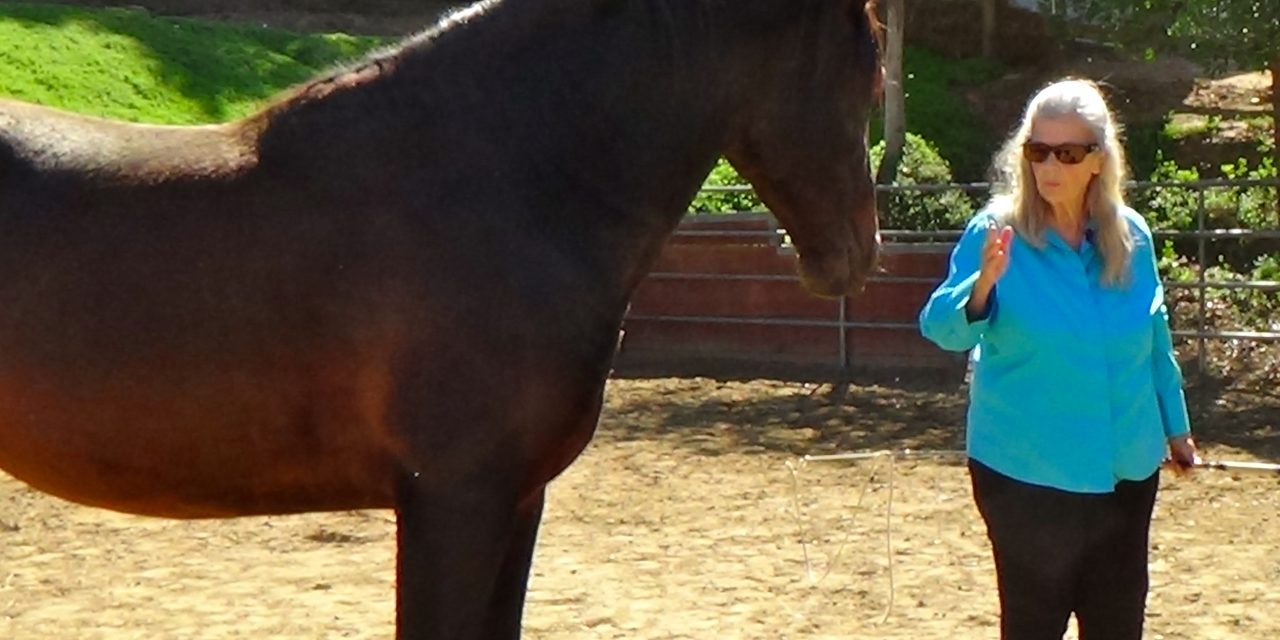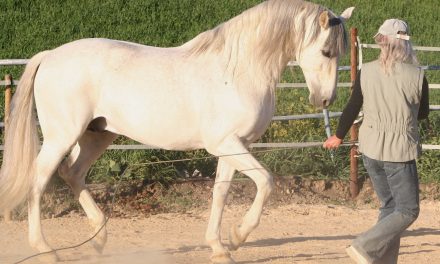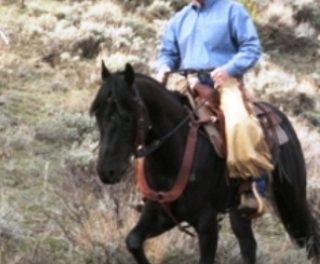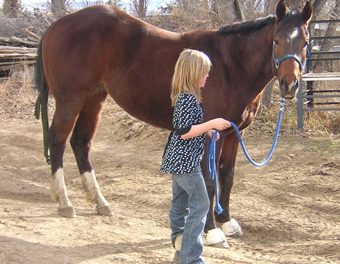 The first thing I want to suggest is never, as a common practice, allow a horse to move out of control on a lunge line as a way to get rid of pent up energy. It is too much stress on a horse’s legs and it teaches a horse to use his energy against you.
The first thing I want to suggest is never, as a common practice, allow a horse to move out of control on a lunge line as a way to get rid of pent up energy. It is too much stress on a horse’s legs and it teaches a horse to use his energy against you.
What makes a perfect lunging experience is when you ask a horse to step out onto the circle to lunge he would then take the slack out of the line and move onto the circle and not pull. The horse circles the handler in the gaits and speed you ask for and that you can move from one end of the arena to the other end and the horse will stay out on a circle without pulling the line. You should not need gloves for lunging or even for training a horse to lunge.
We seldom see this seamless connection on a lunge line between horse and handler and when we do it is admirable. It can be both difficult as well as easy to accomplish this seamless connection, depending on the approach you take.
These are a few reasons why it can be difficult lunging your horse. First, the horse is taught to stay with you and never go out on his own when being lead so a horse can get confused when you try to encourage him to move out on a circle away from you. When you send a horse out on a lunge line it is often met by the horse turning around and facing you. Another reason it can be difficult is that when the horse gets out on the line he thinks he is doing something wrong or he does not feel you are in charge of him anymore. Both attitudes of the horse can get the same reaction- the horse pulling the line from you and then running away which can create a pull back horse.
If your horse leads well, can trot at your side and has a good halt you can teach him how to lunge easily with what I have to share with you.
First, teach your horse how to move at Liberty in a round pen. This way your horse will feel more secure. Then turn your horse loose and when he is relaxed and comfortable being in a round pen ask him to walk. When he is walking comfortably around the round pen ask him, with your driving body language, to stay out on the circle. Use a lunge whip that he is not afraid of and would have enough meaning to him to be able to influence his forward movement without frightening him. Stay in walk for a week so that the walk and the pattern become natural to the horse and do both directions.
Then do the same at a trot for a week and then a canter. After that put a lunge line on him and work on getting him to halt on his path, using the same pattern, without him turning around and facing you. If he turns and faces you, go up and put him straight onto the path. Next time when he falls in use your body language to send the horse back out on the circle stepping towards his nose. Wait with him for a while and then repeat.
After your horse is comfortable with being lunged in a round pen you then can take him to the next stage where you lunge him in a full size arena. If you do not have a round pen the next exercise may well work for you without having to use a round pen.
The secret of getting a horse to lunge is that your horse would respond to your body language by moving away from you, when you approach him with a driving aid, using a lunge whip and your body language.
Here are two videos that might help you on this leg of the journey. The horse I used, Apollo, has not had any training in a round pen and he still learned how to lunge easily. This video of Apollo is part of the Bit-Less Dressage program I offer.
View in the Video Section “How to teach your horse to lunge – Part I” and “How to teach your horse to lunge – Part II” for further explanation.
Have a great weekend! Be on the lookout for more horse and human sightings and may the horse be with you.
Warmly,
Carolyn
http://www.carolynresnickblog.com





